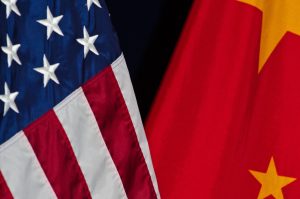Published 10 January 2019 | 2 minute read
The extension of trade talks in Beijing has sparked an uptick in stocks and renewed optimism. One should not read too much into the extension, as outlined in our US China trade talk update.
It is more likely reflective of the volume of work negotiators have to plow through between now and the March deadline, rather than any major breakthroughs.
In any case though, the talks this week were just an opening overture to what will be an ongoing series of negotiations that will likely run right up until the March deadline. As with most trade negotiations, the toughest “make or break” issues will probably not be resolved until the end of the process. This initial meeting was instead an opportunity for officials to identify key issues, begin to narrow differences, and lay the groundwork for a successful second round of negotiations, most likely to take place within the next couple of weeks in Washington DC.
In terms of the final agreement that negotiators are working towards, it’s important to draw a distinction between a face saving agreement that will achieve just enough progress to allow both countries to declare that the trade war has been resolved, and a more meaningful agreement that addresses the core issue: how do you deal with the market distortions created by China’s industrial policies and its state directed economic system?
Thus far, we haven’t been able to develop effective trade rules for coping with the lopsided playing field that results from large SOEs with ample state support competing against private companies, capital allocation on the basis of policy objectives rather than economics, and coerced technology transfers which ultimately end up empowering competitors – along with a host of other distortions created by China’s very different economic system.
Although a superficial face saving agreement should be possible in 90 days, a meaningful agreement on these complex issues is not.
As we watch the negotiations continue to unfold, it will be useful to understand the different perspectives both countries are bringing to the table. The United States appears determined not to make the same mistake it has in the past: accepting vague assurances and promises from China on market opening and reform. This time around, expect to see US negotiators insist on concrete, specific details, and most importantly a monitoring and enforcement mechanism to ensure that whatever is agreed will actually be implemented.
China, for its part, will be looking to ascertain the lowest level of concessions it will have to offer in order to bring the trade war to an end.
In terms of the shape of the ultimate agreement, it will be relatively easy to make progress on increasing purchases of US products, especially in the agricultural and energy sectors. It will be much more difficult to meaningfully address the market distortions created by China’s industrial policies, especially those related to technology.
The US will not get everything it wants. It is entirely unrealistic to think that China would be willing to dismantle its industrial policies – especially Made in China 2025, an ambitious government program aimed at achieving preeminence in a number of strategic technology sectors. But Chinese officials do recognize that some modifications will have to be made, and in fact have already telegraphed in general terms a willingness to address subsidies, curb technology transfers, and improve market access. The ultimate fate of the negotiations will hinge largely on whether the concessions China is prepared to make — once they are clarified and fleshed out — will be sufficient for the US to stand down on its increasingly damaging trade actions.
So, where are we headed? Given the volatility of the situation, it’s not wise to offer predictions, but it is worth noting that pressure is increasing on both sides to reach a resolution. And a minimal face saving agreement should be possible before the deadline. But this would only delay the ultimate day of reckoning, as friction points between China’s state-directed economic system and the US’ ostensibly free market, free trade system will reassert themselves sooner rather than later.
If however an agreement is not reached, it is entirely conceivable that by the middle of the year, 25 percent tariffs will be assessed on virtually all Chinese products imported into the United States, and commensurate retaliatory measures will presumably be taken by China against US interests. In that case, the trade war will have reached a whole new level, inflicting significant pain across the board – on consumers, companies, and investors in both countries.
A “middle course” outcome is also possible, in which enough progress is made in the 90 day framework to forestall further escalations (and ideally to permit de-escalation), while negotiators continue the longer term task of addressing the core underlying issues. Provided (and this is an admittedly challenging proviso) that these extended negotiations can avoid deteriorating into a cycle of “endless talk and no action”, they might provide the best hope for building long-term stability between the US and China.
© The Hinrich Foundation. See our website Terms and conditions for our copyright and reprint policy. All statements of fact and the views, conclusions and recommendations expressed in this publication are the sole responsibility of the author(s).




